Hongmin Li
INT: Towards Infinite-frames 3D Detection with An Efficient Framework
Sep 30, 2022

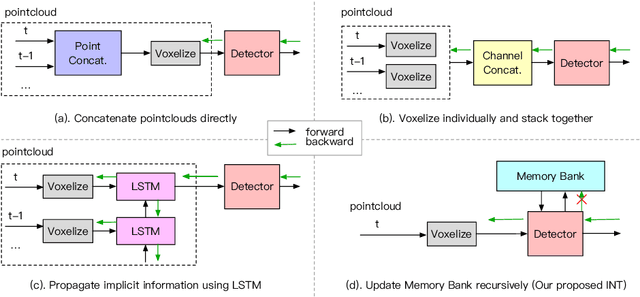

Abstract:It is natural to construct a multi-frame instead of a single-frame 3D detector for a continuous-time stream. Although increasing the number of frames might improve performance, previous multi-frame studies only used very limited frames to build their systems due to the dramatically increased computational and memory cost. To address these issues, we propose a novel on-stream training and prediction framework that, in theory, can employ an infinite number of frames while keeping the same amount of computation as a single-frame detector. This infinite framework (INT), which can be used with most existing detectors, is utilized, for example, on the popular CenterPoint, with significant latency reductions and performance improvements. We've also conducted extensive experiments on two large-scale datasets, nuScenes and Waymo Open Dataset, to demonstrate the scheme's effectiveness and efficiency. By employing INT on CenterPoint, we can get around 7% (Waymo) and 15% (nuScenes) performance boost with only 2~4ms latency overhead, and currently SOTA on the Waymo 3D Detection leaderboard.
LSEC: Large-scale spectral ensemble clustering
Jun 18, 2021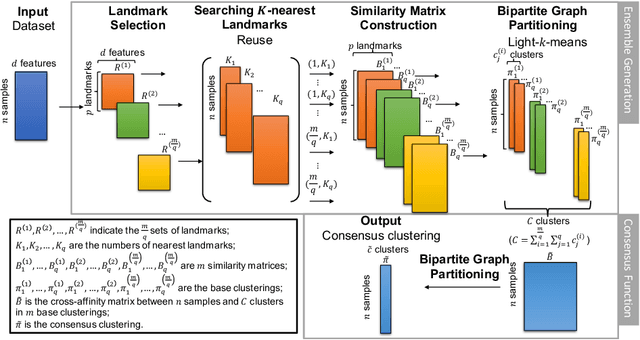
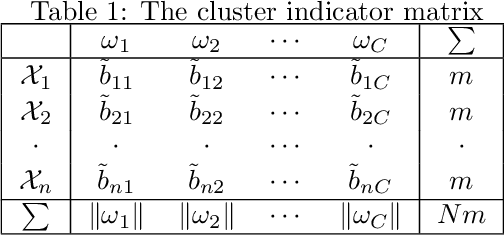
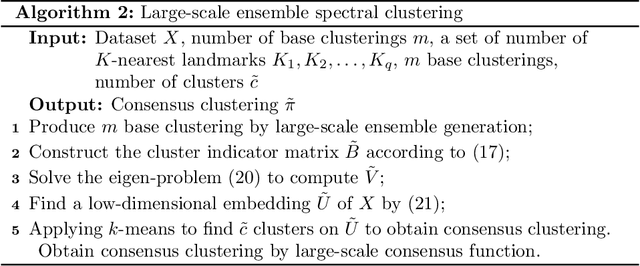
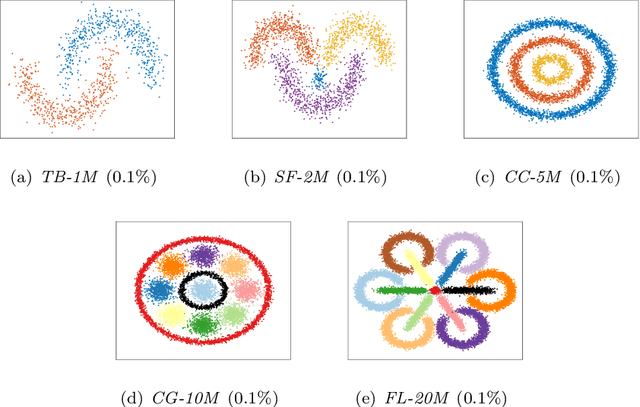
Abstract:Ensemble clustering is a fundamental problem in the machine learning field, combining multiple base clusterings into a better clustering result. However, most of the existing methods are unsuitable for large-scale ensemble clustering tasks due to the efficiency bottleneck. In this paper, we propose a large-scale spectral ensemble clustering (LSEC) method to strike a good balance between efficiency and effectiveness. In LSEC, a large-scale spectral clustering based efficient ensemble generation framework is designed to generate various base clusterings within a low computational complexity. Then all based clustering are combined through a bipartite graph partition based consensus function into a better consensus clustering result. The LSEC method achieves a lower computational complexity than most existing ensemble clustering methods. Experiments conducted on ten large-scale datasets show the efficiency and effectiveness of the LSEC method. The MATLAB code of the proposed method and experimental datasets are available at https://github.com/Li- Hongmin/MyPaperWithCode.
Divide-and-conquer based Large-Scale Spectral Clustering
Apr 30, 2021
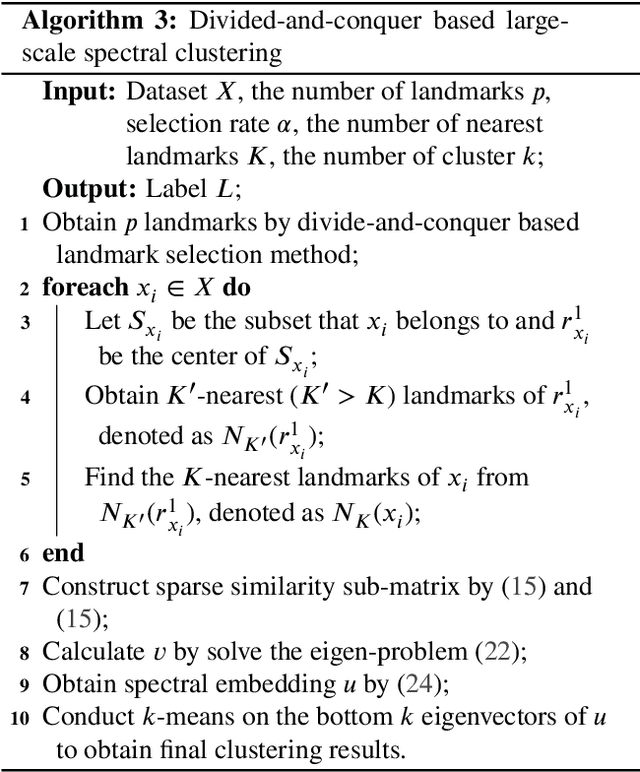
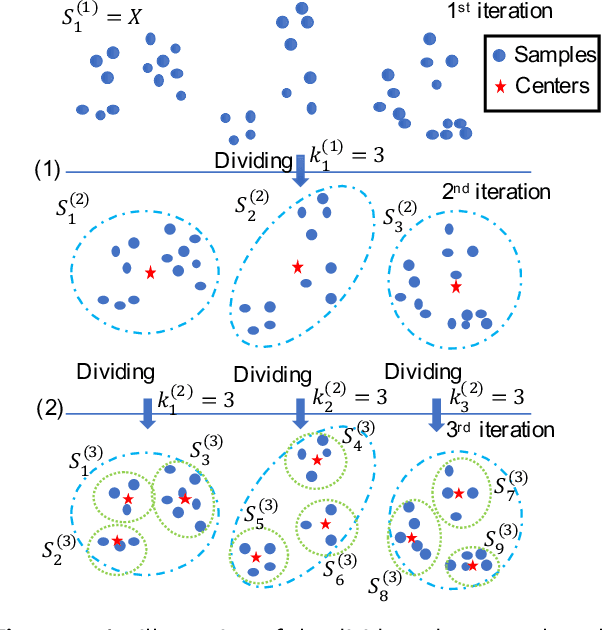
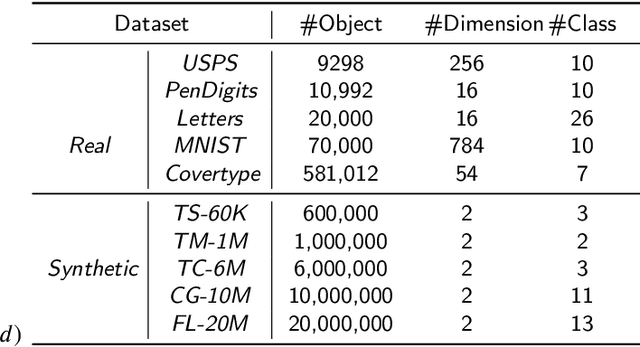
Abstract:Spectral clustering is one of the most popular clustering methods. However, how to balance the efficiency and effectiveness of the large-scale spectral clustering with limited computing resources has not been properly solved for a long time. In this paper, we propose a divide-and-conquer based large-scale spectral clustering method to strike a good balance between efficiency and effectiveness. In the proposed method, a divide-and-conquer based landmark selection algorithm and a novel approximate similarity matrix approach are designed to construct a sparse similarity matrix within extremely low cost. Then clustering results can be computed quickly through a bipartite graph partition process. The proposed method achieves the lower computational complexity than most existing large-scale spectral clustering. Experimental results on ten large-scale datasets have demonstrated the efficiency and effectiveness of the proposed methods. The MATLAB code of the proposed method and experimental datasets are available at https://github.com/Li-Hongmin/MyPaperWithCode.
Robust event-stream pattern tracking based on correlative filter
Mar 17, 2018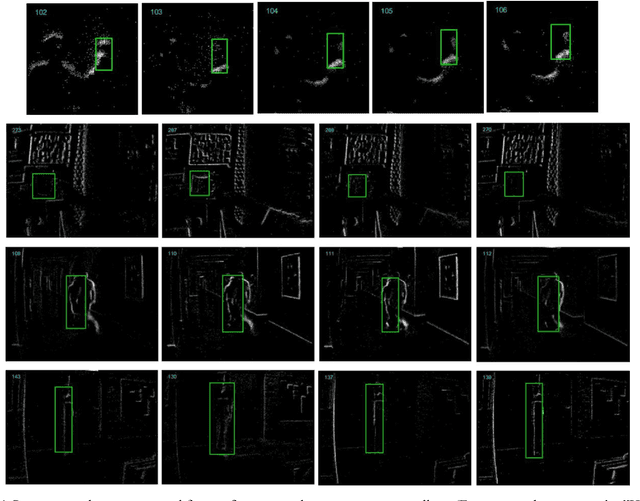
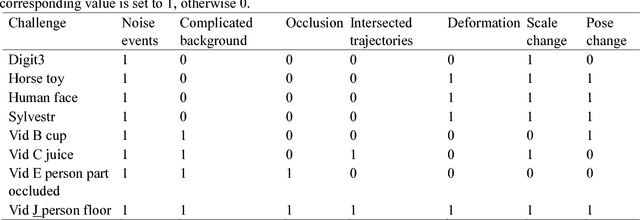
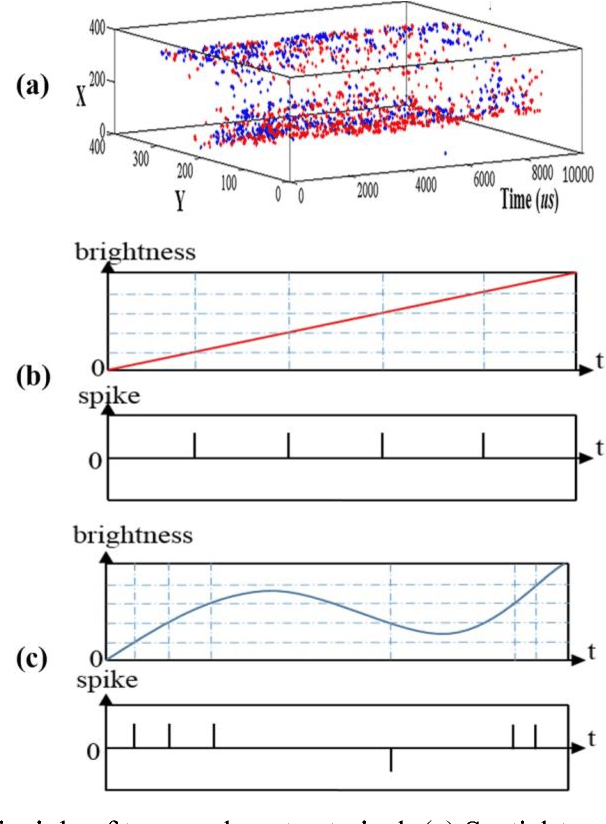

Abstract:Object tracking based on retina-inspired and event-based dynamic vision sensor (DVS) is challenging for the noise events, rapid change of event-stream shape, chaos of complex background textures, and occlusion. To address these challenges, this paper presents a robust event-stream pattern tracking method based on correlative filter mechanism. In the proposed method, rate coding is used to encode the event-stream object in each segment. Feature representations from hierarchical convolutional layers of a deep convolutional neural network (CNN) are used to represent the appearance of the rate encoded event-stream object. The results prove that our method not only achieves good tracking performance in many complicated scenes with noise events, complex background textures, occlusion, and intersected trajectories, but also is robust to variable scale, variable pose, and non-rigid deformations. In addition, this correlative filter based event-stream tracking has the advantage of high speed. The proposed approach will promote the potential applications of these event-based vision sensors in self-driving, robots and many other high-speed scenes.
Super-resolution of spatiotemporal event-stream image captured by the asynchronous temporal contrast vision sensor
Mar 16, 2018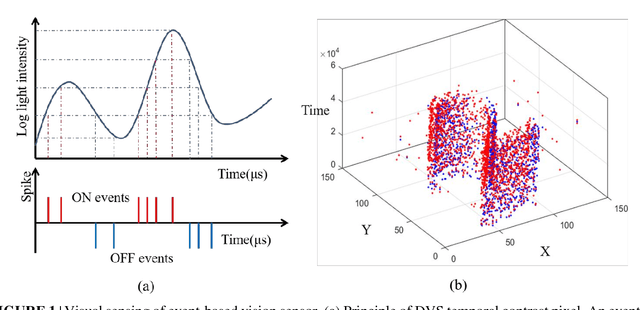
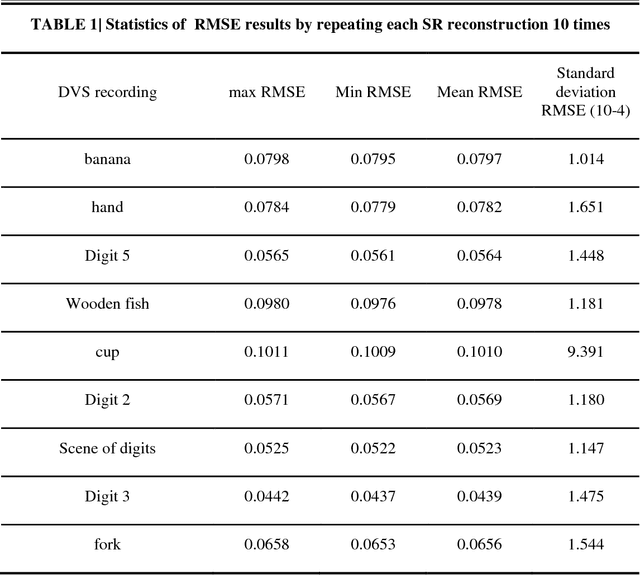
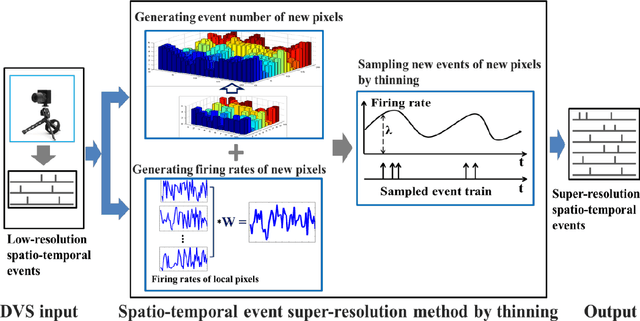
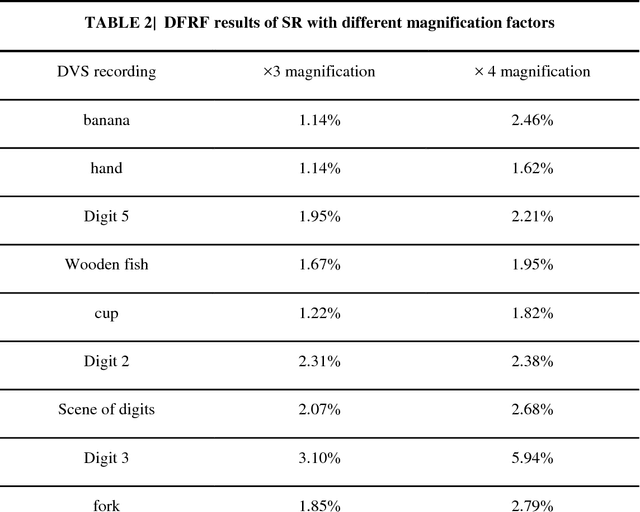
Abstract:Super-resolution (SR) is a useful technology to generate a high-resolution (HR) visual output from the low-resolution (LR) visual inputs overcoming the physical limitations of the cameras. However, SR has not been applied to enhance the resolution of spatiotemporal event-stream images captured by the frame-free dynamic vision sensors (DVSs). SR of event-stream image is fundamentally different from existing frame-based schemes since basically each pixel value of DVS images is an event sequence. In this work, a two-stage scheme is proposed to solve the SR problem of the spatiotemporal event-stream image. We use a nonhomogeneous Poisson point process to model the event sequence, and sample the events of each pixel by simulating a nonhomogeneous Poisson process according to the specified event number and rate function. Firstly, the event number of each pixel of the HR DVS image is determined with a sparse signal representation based method to obtain the HR event-count map from that of the LR DVS recording. The rate function over time line of the point process of each HR pixel is computed using a spatiotemporal filter on the corresponding LR neighbor pixels. Secondly, the event sequence of each new pixel is generated with a thinning based event sampling algorithm. Two metrics are proposed to assess the event-stream SR results. The proposed method is demonstrated through obtaining HR event-stream images from a series of DVS recordings with the proposed method. Results show that the upscaled HR event streams has perceptually higher spatial texture detail than the LR DVS images. Besides, the temporal properties of the upscaled HR event streams match that of the original input very well. This work enables many potential applications of event-based vision.
Real-time Tracking Based on Neuromrophic Vision
Oct 18, 2015Abstract:Real-time tracking is an important problem in computer vision in which most methods are based on the conventional cameras. Neuromorphic vision is a concept defined by incorporating neuromorphic vision sensors such as silicon retinas in vision processing system. With the development of the silicon technology, asynchronous event-based silicon retinas that mimic neuro-biological architectures has been developed in recent years. In this work, we combine the vision tracking algorithm of computer vision with the information encoding mechanism of event-based sensors which is inspired from the neural rate coding mechanism. The real-time tracking of single object with the advantage of high speed of 100 time bins per second is successfully realized. Our method demonstrates that the computer vision methods could be used for the neuromorphic vision processing and we can realize fast real-time tracking using neuromorphic vision sensors compare to the conventional camera.
 Add to Chrome
Add to Chrome Add to Firefox
Add to Firefox Add to Edge
Add to Edge